
SHAH ALAM: The Armed Forces conducted the first live firings of the Starstreak VSHORAD system at the Tanjung Logok ground to air firing range near Kota Tinggi on Monday. The firing involved personnel from the three services of the Armed Forces.
The Starstreak missiles were from a consignment of the VSHORAD system delivered just three days before the firing took place. It was because of this the gunners did not conduct any test firings ahead of the event although they did trained to track the target – a Banshee drone – several days prior to the exercise. The 26 shooters involved were trained in two batches at Thales facility in the UK, in October, 2015 and February, this year .
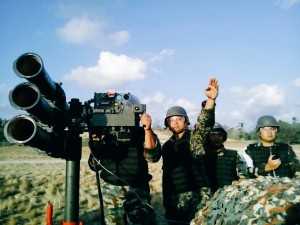
Three missiles were fired on Monday at the Banshee drone with all declared as technical hits. They cancelled the fourth firing as they had ran out of time allocated. The range is located on the busy air-route to Singapore and the Senai airports.
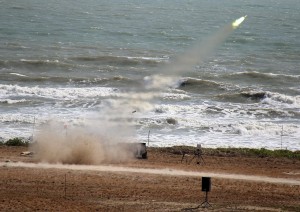
According to Defence Minister Datuk Seri Hishammuddin Hussein, the consignment – the current Starstreak VSHORAD system – were made available as per the contract for the missiles signed last year.
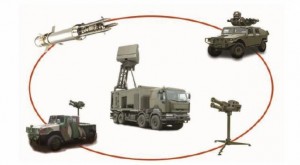
Under the deal, the Armed Forces will be getting the Thales Integrated Advanced Air Defence system, ForceShield. In addition to the Starstreak missiles, the system comprises ControlMaster 200 radar and weapon coordination systems, RapidRanger and RapidRover mobile weapon systems and the Next Generation (NG) Lightweight Multiple Launcher (LML), as well as associated communications.
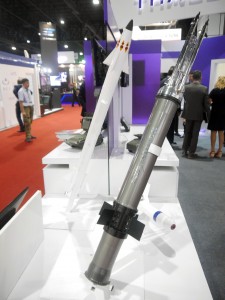
As part of the deal also, Thales also took back the retired Starburst missile inventory with the Armed Forces and replaced them with the launchers and missiles which were used during the firing exercise on Monday.
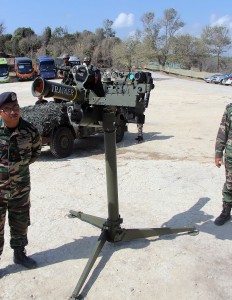
Hishammuddin did not say how many launchers and missiles were delivered but it is likely that it was not a 1-to-1 replacement for the retired Starburst system.
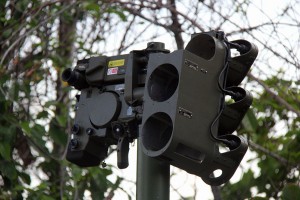
The minister said the first Starstreak NG system will be delivered in 2018 with the first consignments going to the RMAF and RMN air defence units.
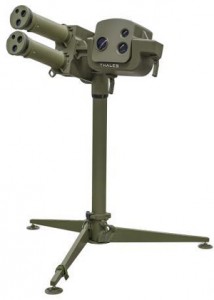
The Starstreak missiles in country are now mostly under the inventory of the RMAF Skuadron 401. The unit will be working with Global Komited to integrate the mobile launcher variant – RapidRover on the Weststar GK-M1 Weapon Platform.
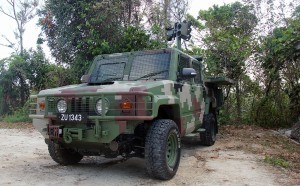
It is likely the Army’s Grup Artileri Pertahanan Udara (GAPU) will be the last to receive the Starstreak missiles, but for that inconvenient, they will get the RapidRanger – the fully stabilised launcher – version of the system.
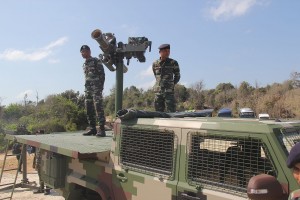
Contrary to what I reported previously, the Malaysian RapidRanger version will be fitted on the Weststar GK-MK1 Weapon Platform and not on the Vamtac Uro, which is supplied by another company.
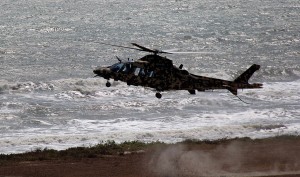
After the missile exercise, Hishammuddin flew on a AW109 of the PUTD to witness another live firing demonstration. I cannot say anything more about that! You can make your own deduction of what had happened from the screenshot below.
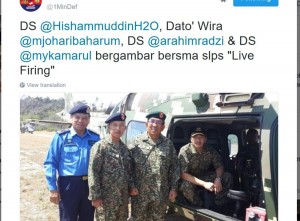
Unfortunately as my camera froze up at the firing range, I was unable to take any videos of the firing exercise. However you can opt to watch the video of the firings uploaded to the Kementerian Pertahanan Youtube channel.
— Malaysian Defence
If you like this post, buy me an espresso. Paypal Payment

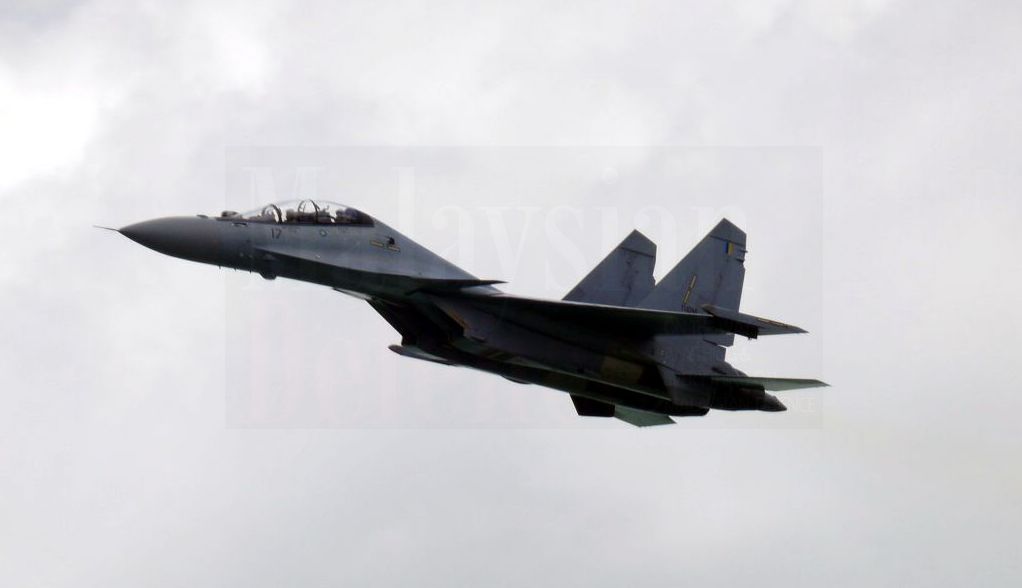
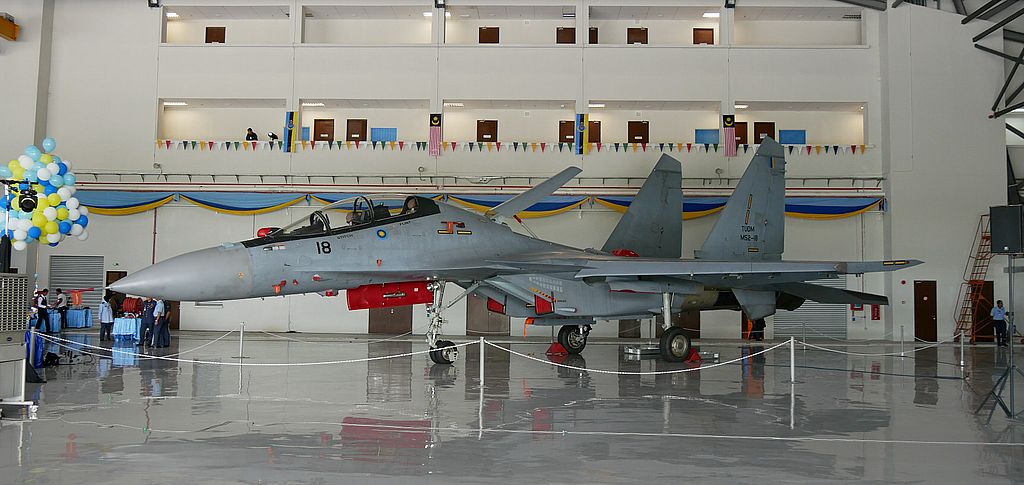

Nice
Seems that our short range air defence is pretty well covered (with AAAs, jernas, starstreak and boatloads of Manpads), while our long range air defence is under RMAF.
I hope the army could get VL-MICA for medium-range air defence, since it will be used in LCS programme as well. While it doesn’t sound like much (considering other options like Buk or Chines HQ-16), but it still greatly boost our air defence as well as part (and missile) commonality with RMN
Do the Malaysian Army need a medium or even long range SAM? If we look at the Australian Army and the British Army, they are well content with only having SHORAD, while anything above that is the domain of the respective airforces.
Reply
I was told that GAPU has been tasked to come up with the requirements for MR-SAM but it’s unlikely to be funded under RMK11
kamal – ”If we look at the Australian Army and the British Army, they are well content with only having SHORAD, ”
Because if both are deployed for real; both will be operating under a strong air umbrella or in conditions where air superiority has been achieved. Both countries also only have MANPADS/V-SHORADS. The question of whether GAPU needs something with more legs is debatable. On paper it should be the RMAF.
Dundun – ”Seems that our short range air defence is pretty well covered (with AAAs, jernas, starstreak and boatloads of Manpads), ”
We need more alerting devices and gap fillers. The Starstreaks will come with alerting devices but the rest of GAPU only has 2 TRS-3Ds, 2 Giraffes and 2 [or 1?] VERAs. At a lower level there is a need for additional alerting devices. Also, given that Igla and Anza were ordered more than 10 years ago; they question is how long more can the operated before their circuitry and warheads wear out.
Well the one thing that I believe is that the mr-sam will definitely be the same as the missile chosen for LCS. The control master 200 is a radar for fire control with more than 100 km engagements range. Though the numbers is not known.
So GAPU is providing air defence for army installations only?
Reply
Not really as the Anza and Igla are supposed to be with the forward troops. As RMN and RMAF got their own AD units, they take care of their own.
The British Army will be acquiring CAMM with a 25-45km range, so “short” range is a relative term.
Shorads and vshorads work best when you have further- and higher-reaching SAMs to force enemy aircraft down to their altitude envelopes. As we don’t have these, the effectiveness of our manpads is questionable.
Cost permitting, we should replace or complement them in roles that do not require such high mobility.
If i may ask, why are we going with starstreak instead of other systems and 2ndly why not going directly with mrads since the protection range is longer and higher. Tq
Reply
There are various reasons for the procurement, many of which I will probably be not aware off, and therefore cannot explained. Anyhow, the Starstreak deal got the personal attention of the British PM (as it helped Belfast labour issues) and I guess that is one of the reasons we did buy it. Moreover its easier to get the funds to replace something instead of buying a completely new system like the MR-SAM which costs a lot more to buy and operate.
All this while i tend to believe that the army should only operate shorad to counter threat from UAVs and Armed Helis.For fighter jets,either supersonic or subsonic,this should be best handled by TUDM well assuming TUDM have the adequate number of jets in the first place
AM – ”As we don’t have these, the effectiveness of our manpads is questionable. ”
Had this debate with someone here previously.
Granted, improved technology and stand off munitions enable aircraft to hit targets at higher altitudes now but there will still be instances when aircraft [due weather, type of target, ROEs, etc] will have to come in low; below 10,000 feet.
“the personal attention of the British PM and I guess that is one of the reasons we did buy it. Its easier to get the funds to replace something instead of buying a completely new system like the MR-SAM and costs a lot more to buy and operate.”
More important to ensure we have C2 networks to provide warning and avoid shooting down our own aircraft.
Otherwise, we will be spending valuable time and wasting missile range if the crews have to visually identify an incoming aircraft, very much reduced. There would be no point acquiring a longer ranged system until this problem is solved.
Could you comment please on the statement by menhan that there was no encroachment by China at beting patinggi ali and the earlier statement by apmm and its minister on the presence of 100 fishing boats and a few coast guard ships from china. Is the statement from apmm wrong or are we still appeasing china on the issue. Tq
Reply
The combination of both statements
Yes, it’s easier to persuade the bean counters we need cash to replace something that no longer is operable. If the MAF asks for cash to buy something new or something we never previously operated; the bean counters will say stuff like ”does the threat situation warrant” it, ”wait until the economy improves”, etc.
kamal – ”For fighter jets,either supersonic or subsonic,this should be best handled by TUDM”
For threats beyond a certain altitude or a certain type; the RMAF should have responsibility for the simple reason that only the RMAF has the needed integrated surveillance and alerting devices. For point defence against low level targets [irrespective of whether UAVs, helicopters or jets that have made it past the RMAF], I see no reason why the army or the RMN should not have the means to have some form of self-defence. We also can’t expect the RMAF to be everywhere at any given time; even if it had adequate numbers of fighters.
Reply
It must be noted that MRSAM may need more personnel to support the system hence more money to operate them. It is also likely that the they will need new shelters for launchers, mobile radars etc and new bunkers to store the missiles. As the foot print of the Starstreak system is very similar to the Starburst it is likely they don’t need new facilities. This facilities may need refurbishment but a lot cheaper than building new ones.
Yes. Medium range missiles [never mind longer range stuff with an ABM capability like ASTER 30 and Patriot] cost an arm and leg; not only to buy but also operate and support. If the army finds the support cost of Jernas expensive; imagine what it’ll take to support something like MICA or ASTER 15. With MANPADs/V-SHORADs the main issue is keeping an eye on the battery and storing in ideal conditions. The propellant and circuitry tends to wear out faster if the missile is stored in the field for long and if the seeker is on for more than a few seconds without achieving a lock on; the battery goes.
In the case of the RMAF [assuming it gets a long range system in the future], the system will have to be integrated to the existing radar feed. If I’m not mistaken, GAPU’s TRS-3Ds are networked to the RMAF’s radar feed. It remains to be seen what will eventually replace Anza and Igla; more Starstreaks or another IR missile? given that the propellant and circuitry tends to last for no more than a decade or so, Anza and Igla will be retired soon – unless off course they go back to the OEM.
Reply
Technically both the MICA and Aster will be much easier to handle as the missiles sit in their own launchers and therefore need no maintenance at all for their given service lives. The Jernas has to be kept in a box and then taken out to fit on the launchers.
As for the replacement for the GAPU Manpads, I believe the PAC units need something else than the Starstreak which need a LML to be used. It might be light enough for fixed defence but too heavy for a single paratrooper to carry unlike the Anza or the FN-6.
Wait do we really have FN-6? There are several articles on the internet that we bought them (along with the technology to manufacture one), but I have never seen images of it. Not in exercises, not in parades, not even in static display.
Reply
There was no TOT on the FN-6 AFAIK. It has been displayed or carried on various occasions. It is not one of those things that jump out unless you look for it.
The fn6 along with the anza is mostly used by the para brigade.
https://farm6.staticflickr.com/5522/9991500104_44be650252.jpg
Anza MkIII looks like a good bet for replacement of ANZA MKII. Commonality and similarity in training and logistic footprints. Differing reports stated the volume we had are between 500 to 1500 missiles (for ANZA).
Dundu,
Battery 361 operates Anza. Anza has been displayed in public on numerous occasions.
Kamal,
We bought it not because it was cheap or because it has great specs but because we had unresolved business with Pakistan. Same reason we bought Bakhtar Shikan and RPG-7s. Given that only a battery operates it; we can make a rough estimate of the numbers we bought.
If we had bought KS-1s, China would have let us license assemble FN-6s – an MOU was signed. We also bought MP-5s [for the police] and laser designators [for PASKAU] from Pakistan and we also sent MM-38s to be re-wired in Pakistan.
“For point defence against low level targets [irrespective of whether UAVs, helicopters or jets that have made it past the RMAF], I see no reason why the army or the RMN should not have the means to have some form of self-defence. We also can’t expect the RMAF to be everywhere at any given time; even if it had adequate numbers of fighters.”
This can be debated. Unlike some other countries, our armed forces, especially our army, will not be operating outside our borders in large units. The extent of territory that we must defend from air attack is therefore finite and is known to us in advance. It will include strategic operating areas, infrastructure and civilian areas, but it will not include the full extent of our territory.
Therefore, it may be good to entrust all ground based and airborne air defence to a single service.
What we really need right now is VSHORAD and SHORAD for self-defence of our ground formation. The threat will be a low level attack fighter and attack helicopter that managed to sneak pass the defending fighters. We better leave the medium and high altitude to the RMAF.
Most of our SAM are either personally carried or mounted of soft skin vehicle. I suggest we get something that can stay close enough to our armored spearhead, which mean’s it must be mounted on an armored chassis so it can keep up with the fast moving armored forces, and the armor will increase it’s survivability in a tank environment. Maybe we can mount rapidranger on a Gempita chassis or may our upcoming 6×6.
We can also get a mobile SHORAD like the Tunguska or Tor missile system. This system has the advantage that it has the whole system integrated in a single chassis rather than having a missile and early warning on separate vehicles. Very effective against the attack aircraft and helicopters that suddenly pop out of nowhere.